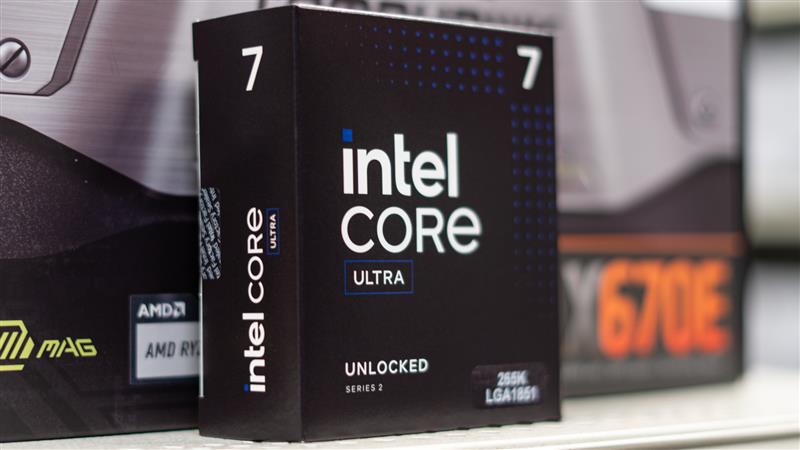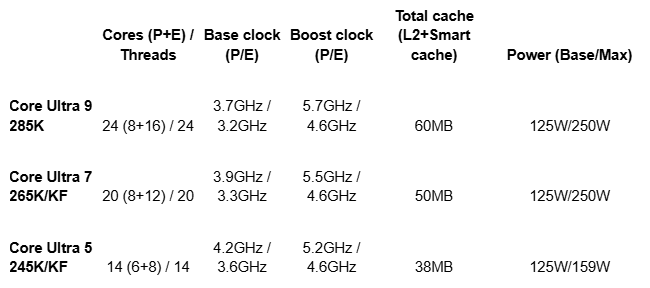Intel 200S Processors: CPUs with Creators in Mind
Intel’s latest generation is a stellar chip for creativesBuying Guides
When it comes to the most demanding creative applications for video editing, game development, and 3D rendering, more cores is almost always better. Intel's latest Core Ultra 200S chips offer a combination of powerful performance cores and capable efficient cores, making them excellent workhorses for pure content creation, and they're far more efficient than their predecessors, as well.

Intel 200S overview
Intel’s Core Ultra Series 2 processors, otherwise known as Arrow Lake or 200S, were a major milestone in Intel’s CPU-building history. The original 200S dropped iconic features like hyperthreading, rearranged Performance (P) and Efficiency (E) cores for reduced inter-core latency, and this was the first Intel CPU line to be exclusively designed with DDR5 memory in mind.
These CPUs have incredibly high clock speeds and core counts, all built on TSMC’s new N3B node, an evolution over Intel’s own internal process technology. They also include a neural processor unit, or NPU for AI calculations, although the CPU cores and any onboard graphics card will offer even more performance for that sort of task.
How the chips compare
Like Intel generations past, there are a lot of options if you’re looking to upgrade to an Intel Core Ultra 200 PC. The flagship is the Core Ultra 9 285K, which features 24 cores (8P + 16E). The 265K has 20 cores (8P + 12E), while the more modest 245K has 14 cores (6P + 8E). Each of these also has a non-K counterpart, which doesn’t boost as high and does not have overclocking support. There are also more modest options with fewer cores and lower clocks again, as well as “F” options which skip the onboard graphics.

The more budget-minded chips come with lower power demands, too, especially the non-K options. If you want a PC that sips power rather than glugs it, non-K chips are a fantastic choice, as they cut down on power demands even further. Keep in mind, in certain applications, the additional E cores and higher clock speeds of the top-end cards can make a world of difference.
Video editing
Until the Arrow Lake generation of CPUs came along, Intel’s last-generation 14-series CPUs ruled the roost. They might have high power draw, but the 14900K and 14700K are incredibly fast CPUs in applications like Adobe Premiere. However, the newer Core Ultra 200 processors take that to new heights.
The Core 9 Ultra 285K and Core Ultra 7 265K are faster than ever, and even the more-affordable 245K is right at the heels of the fastest 14th-generation alternatives, making it a great chip for those who want a powerful but economical video editing PC.
CPU 3D rendering
In applications like Blender and V-Ray, the Intel Core Ultra 9 285K is one of the fastest CPUs ever made, and certainly the fastest Intel CPU for the task. The 285K blows way past the last-generation 14900K, and the 265K is an equally viable option at a more affordable price.
This is doubly impressive considering Intel has dropped hyperthreading from this new generation of processors. In the past, that would have doubled the number of simultaneous threads that these chips could handle, but even with that thread-count disparity, the new Core Ultra processors still make big gains in multi-threaded performance.
Game development
Modern game engines are incredibly capable, but they can also be incredibly demanding, so having a powerful CPU to compile shaders and lighting when testing your game makes a big difference. We can happily report that the Intel Core Ultra 200 series processors are absolute powerhouses with these sorts of tasks. The 285K streams ahead of its predecessors, and does so at a much lower power draw than the previous 14900K king – more on that below.
These are applications that really love the higher core counts of the top chips, though, so while the 265K, 245K, and other, budget-conscious 200 series processors are strong options for those on tighter budgets, this is one area where you get what you pay for. More money means more cores, which means much better performance.
Efficiency and power
As impressive as the performance of the Core Ultra 200S series of processors is, one of the more important gains from this generation is in efficiency. Although the flagship Core Ultra 9 285K will still pull around 235W in demanding applications like Blender, similarly high-end programs like Adobe After Effects only pull 180W, while Premiere Pro has it sipping power in the sub 50W range at times.
Further down the pack there’s even greater efficiency to be found, too. The Core Ultra 7 265K rarely breaches 155W in even heavily multithreaded tasks, despite its maximum power rating still giving it the headroom to pull up to 250W required.
Across the board this generation is far more energy efficient than previous Intel CPU lines. That makes them excellent options for smaller form-factor PCs, as well as reducing overall demands on cooling, and long-term energy bills.
Intel Core Ultra 200 are built with creators in mind
Intel’s Core Ultra 200 generation of processors were a real paradigm shift for Intel. It ditched some long standing technologies, pushed into multi-tile design, and blazed new paths in performance and efficiency. If you’re looking to accelerate your creative endeavours, a new system based on Intel’s latest Core Ultra 200 processors is a great place to start.











